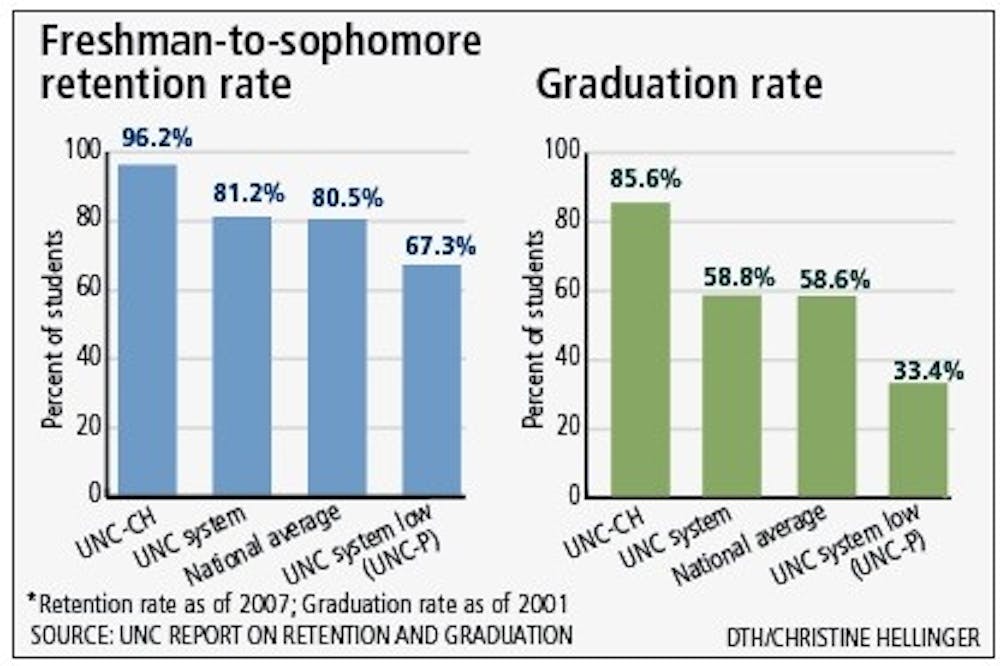After years of focusing on enrollment growth, UNC-system leaders now say that educational quality has not kept pace.
To bring the two into alignment, universities’ state funding will soon be tied not only to enrollment growth, but also to freshman retention and six-year graduation rates.
In the last several years, the emphasis has been on increasing student populations to counter concern that the UNC system was underserving the state, said Hannah Gage, chairwoman of the UNC-system Board of Governors.
Tying funding from the N.C. General Assembly to enrollment growth prompted rapid expansion on many campuses, Gage said.
But the number of students who dropped out, flunked out or took extra time to graduate also increased.
There needs to be a stronger correlation between financial investment in universities and degree attainment, Gage said.
“The incentives work. We’re just moving the carrot,” Gage said.
Under the current model, students aren’t getting the education they need to compete, UNC-system President Erskine Bowles said Friday. The system doesn’t just want to “pass students along,” he said.
Schools have accepted students who were unprepared for four-year universities and became stretched too thin to help students who were prepared, he said.
“We’re focusing on results. That’s the shift,” Gage said. “We may have done too well. We may have taken students who aren’t ready.”
To raise retention and graduation rates, schools might need to actually slow their enrollment growth for a couple years, Bowles said.
UNC-Chapel Hill and N.C. State University reflect six-year graduation rates well above the 67.1 percent national average of their peers.
UNC-CH had an 85.6 percent graduation rate in 2002, the last year for which the UNC-system provided data. N.C. State University’s rate was 71.5 percent. Systemwide, the average was 58.8 percent.
But several other UNC-system schools reflect rates well below the average rates of their peer universities.
Universities have raised admissions standards and are being encouraged to direct unprepared students toward spending two years at a community college first, where they might be better-served, Bowles said.
If that happens, universities will be better able to devote time to the students already enrolled who meet admissions requirements, Bowles said.
The shift will put a bigger burden on the community colleges, but the UNC system will fight for them in the state legislature, he said.
“We are working as one now,” he said. “This is a significant policy shift here.”
Contact the State & National Editor at stntdesk@unc.edu.
UNC weighs quality, growth

Freshman-to-sophomore retention rate


